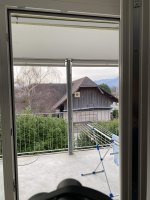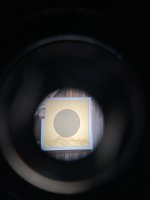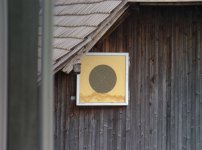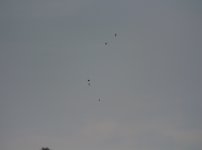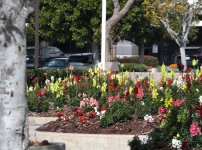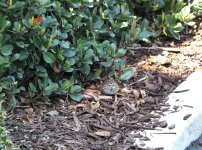Isn’t the human brain an exceptionally wonderful device? Imagine: many adults can sometimes identify a bird even if it is hidden behind branches so that only a small part of the bird’s body is well visible. Trying to mimic that with electronic algorithms is extremely demanding, as any electronics engineer can confirm.
Reading some of the “reviews” of the Visio on the internet gives me the impression that people sometimes don’t really know what can realistically be expected from such a device (and, yes, it may not be too helpful if Swarovski puts the Visio in the neighborhood of “Artificial Intelligence”).
In my experience, the Visio can do amazing things. But to get full satisfaction out of its use, you need to spend a little bit of time and effort with it, more than the average reviewer seems to be willing to invest. So that’s why you get reviews with frustrated accounts of birds not identified, birds mis-identified, shortcomings of the camera, etc. etc.
As far as I can see, those particularly negative reviews on the internet (e.g. on FutureZone) were caused by WRONG EXPECTATIONS. If you go out and try to identify a raptor sitting on the top of a fir tree at a distance of 300 yards, I can guarantee that you will not get that bird identified in the Visio (you might still be able to use the ID picture taken by the Visio later to identify the bird in the Merlin app on the smartphone, depending on the quality of the photo).
To be clear: when I first wrote a post about the Visio, I answered the question “is the Visio the perfect birding device?” with NO – and that is still my answer after 10 days of more or less intensive use. The bird identification functionality of the Visio will sometimes give you no answer or a wrong answer. I had my fair share of no-answers or wrong answers myself. When I analyzed these answers, I came to a number of insights that I thought might be useful to share.
The Visio does have some limitations that will remain, since they are built-in (although the possibility of mechanical and even optical upgrades have been mentioned by insiders, the design of the Visio would allow these). Others will be dealt with over time via software updates (and new functionalities are to be expected from Swarovski and third party app producers in the future).
Here are a few findings, tips and recommendations, for whatever they are worth.
1. Give the Visio sufficient time to start up. The manual mentions a 30 sec. start-up time, but that’s just for the software to become operational. The GPS function needs sometimes more time, depending on where you are. Without it, ID does not work reliably. This also means that
2. You should leave the Visio on while you are actively birding. In my experience, the battery lasts several hours (even if you are regularly making shots with the camera or the bird ID function), which should be sufficient in many situations. If you are out birding for a full day or more without the possibility to reload, perhaps take an extra battery pack.
3. Most “bird not recognized” or “no bird” results in the identification function happen when you try to identify birds that are too far away, which means they will be too small to be identified by the software. The temptation is big to use the ID function on a bird that, with the 10x binocular, appears close and big and easy to identify, but is too far away for the camera of the Visio. Remember that you are not looking through a camera finder, what you see in the Visio is the image in the binocular. The camera does not “see” things as large as you see them in the binocular.
What does “too far” mean? There is no definitive answer; I have had positive results with birds in flight at over 150 yards (red kite) and negative results with birds in trees or on roofs at 30 yards (sparrow).
In general, don’t expect a positive identification result beyond 50-70 yards; you may get one, but more often you won’t. Between 30 and 50 yards, you will get positive results if the bird is well visible, not partially covered in branches, and in good lighting. Otherwise, you may get a “bird not recognized” result. Again, I have had good identification well beyond 30 yards where the bird was almost invisible between thick and thin branches, so these distances are not cast in stone. BUT: almost all non-identified bird photos of a decent quality can later be used in the Merlin app on the smartphone to identify birds. My success rate of this kind of “later ID at home” has been over 80%. This means that the limiting factor for on-the-spot identifications in the Visio is not the camera (since you can later successfully use the photos in the Merlin app), nor the Merlin app as such, but the integration of the camera with the Marlin app. So future software updates could actually improve the in-device ID of birds.
This also means that
4. The most useful feature of the Visio: it not only takes pictures when you use the photo app, but also each time you press the button in the bird ID function, whether or not the Visio can actually identify the bird in question on the spot.
5. If you use the ID function against the light (“backlit”), as is often the case when you are on the ground and the bird sits in a tree, identification is less reliable than with the light coming from behind you (of course, the same is true for your observations with a traditional binocular). Funny enough, however, I found identification of raptors flying in the sky above quite reliable.
6. Whether the camera of the Visio has insufficient focal length, as some reviewers claim, I don’t know; perhaps that is the case. But in my view, the camera is absolutely capable of taking photos for the purpose of recording or later ID, provided there is sufficient lighting. In the dark, the electronic functions of the Visio are hardly usable, and at dawn or dusk, the functionality is quite limited. That is a clear negative.
Of course,
7. You can change camera settings (within limits) when your Visio is connected to a smartphone. The following parameters can be adjusted in the Outdoor app:
Try experimenting with these parameters!
Still, the camera and ID function do work quite satisfactorily on grey dull days, but dusk, dawn or night situations are out of its reach.
8. Like on the NL, I found the eyecaps on the Visio way too tight to quickly take off or put back on, so I replaced with some suitable Leica eyecaps.
9. I already mentioned in another post that you can change the language of bird names displayed in the Visio by using the Merlin app when the Visio is connected to your smartphone. You can even display two lines with e.g. English AND German bird names in the Visio.
10. Like on many cameras, you can turn the visible display of battery status, Bluetooth connection, A/F etc. by briefly pressing the On/Off button. In the compass function, repeated pressing of that button turns the inclinometer and / or the compass on and off.
11. Before using the compass, it is highly recommended to hold the Visio firmly in hand and swing it around, rotating it in all three dimensions (some smartphone manufacturers recommend the same for the compass in their smartphones). This greatly enhances the precision of the compass. But don’t expect it to work like a precision instrument, it can easily be 5 degrees off.
12. Many years back, a device such as the Visio would have come with a large manual, explaining all functions in quite some detail. These times are long gone (unfortunately, I might add, I am still largely an analog person ), and now you have to deal with a short summary manual and some video materials on the internet. For me, that is not ideal, and perhaps someone will write a book about the Visio, as has been successfully done for e.g. photo cameras.
13. There is a long list of things that I would love to see added in future versions of the Visio. Particularly welcome would in my view be more FOV, a laser range measurement function, image stabilization, and a zoom for the camera.
Some posters on the internet claim that without such additions the Visio is barely usable. I disagree and encourage people to test the Visio for themselves.
Do experienced birders need the Visio? I don’t think so. Is the Visio more than just a barely usable toy for spoiled “have-it-alls”? It is, in my personal view. But you have to be willing to invest a bit of time and effort to learn how to properly use the thing.
I add some photos to show what the Visio can – and cannot – do.
The first 9 photos below show correct IDs, the last 4 show no ID or wrong ID.
fwiw Canip
P.S. What I wrote under number 3. above about the (apparent) size of the image in the binocular vs. the camera is not true! See below posts 6, 7, 8 and 9 for explanation.
Reading some of the “reviews” of the Visio on the internet gives me the impression that people sometimes don’t really know what can realistically be expected from such a device (and, yes, it may not be too helpful if Swarovski puts the Visio in the neighborhood of “Artificial Intelligence”).
In my experience, the Visio can do amazing things. But to get full satisfaction out of its use, you need to spend a little bit of time and effort with it, more than the average reviewer seems to be willing to invest. So that’s why you get reviews with frustrated accounts of birds not identified, birds mis-identified, shortcomings of the camera, etc. etc.
As far as I can see, those particularly negative reviews on the internet (e.g. on FutureZone) were caused by WRONG EXPECTATIONS. If you go out and try to identify a raptor sitting on the top of a fir tree at a distance of 300 yards, I can guarantee that you will not get that bird identified in the Visio (you might still be able to use the ID picture taken by the Visio later to identify the bird in the Merlin app on the smartphone, depending on the quality of the photo).
To be clear: when I first wrote a post about the Visio, I answered the question “is the Visio the perfect birding device?” with NO – and that is still my answer after 10 days of more or less intensive use. The bird identification functionality of the Visio will sometimes give you no answer or a wrong answer. I had my fair share of no-answers or wrong answers myself. When I analyzed these answers, I came to a number of insights that I thought might be useful to share.
The Visio does have some limitations that will remain, since they are built-in (although the possibility of mechanical and even optical upgrades have been mentioned by insiders, the design of the Visio would allow these). Others will be dealt with over time via software updates (and new functionalities are to be expected from Swarovski and third party app producers in the future).
Here are a few findings, tips and recommendations, for whatever they are worth.
1. Give the Visio sufficient time to start up. The manual mentions a 30 sec. start-up time, but that’s just for the software to become operational. The GPS function needs sometimes more time, depending on where you are. Without it, ID does not work reliably. This also means that
2. You should leave the Visio on while you are actively birding. In my experience, the battery lasts several hours (even if you are regularly making shots with the camera or the bird ID function), which should be sufficient in many situations. If you are out birding for a full day or more without the possibility to reload, perhaps take an extra battery pack.
3. Most “bird not recognized” or “no bird” results in the identification function happen when you try to identify birds that are too far away, which means they will be too small to be identified by the software. The temptation is big to use the ID function on a bird that, with the 10x binocular, appears close and big and easy to identify, but is too far away for the camera of the Visio. Remember that you are not looking through a camera finder, what you see in the Visio is the image in the binocular. The camera does not “see” things as large as you see them in the binocular.
What does “too far” mean? There is no definitive answer; I have had positive results with birds in flight at over 150 yards (red kite) and negative results with birds in trees or on roofs at 30 yards (sparrow).
In general, don’t expect a positive identification result beyond 50-70 yards; you may get one, but more often you won’t. Between 30 and 50 yards, you will get positive results if the bird is well visible, not partially covered in branches, and in good lighting. Otherwise, you may get a “bird not recognized” result. Again, I have had good identification well beyond 30 yards where the bird was almost invisible between thick and thin branches, so these distances are not cast in stone. BUT: almost all non-identified bird photos of a decent quality can later be used in the Merlin app on the smartphone to identify birds. My success rate of this kind of “later ID at home” has been over 80%. This means that the limiting factor for on-the-spot identifications in the Visio is not the camera (since you can later successfully use the photos in the Merlin app), nor the Merlin app as such, but the integration of the camera with the Marlin app. So future software updates could actually improve the in-device ID of birds.
This also means that
4. The most useful feature of the Visio: it not only takes pictures when you use the photo app, but also each time you press the button in the bird ID function, whether or not the Visio can actually identify the bird in question on the spot.
5. If you use the ID function against the light (“backlit”), as is often the case when you are on the ground and the bird sits in a tree, identification is less reliable than with the light coming from behind you (of course, the same is true for your observations with a traditional binocular). Funny enough, however, I found identification of raptors flying in the sky above quite reliable.
6. Whether the camera of the Visio has insufficient focal length, as some reviewers claim, I don’t know; perhaps that is the case. But in my view, the camera is absolutely capable of taking photos for the purpose of recording or later ID, provided there is sufficient lighting. In the dark, the electronic functions of the Visio are hardly usable, and at dawn or dusk, the functionality is quite limited. That is a clear negative.
Of course,
7. You can change camera settings (within limits) when your Visio is connected to a smartphone. The following parameters can be adjusted in the Outdoor app:
- video resolution
- image rate of video function
- exposure value
- brightness
- contrast
- color saturation
- image sharpness
Try experimenting with these parameters!
Still, the camera and ID function do work quite satisfactorily on grey dull days, but dusk, dawn or night situations are out of its reach.
8. Like on the NL, I found the eyecaps on the Visio way too tight to quickly take off or put back on, so I replaced with some suitable Leica eyecaps.
9. I already mentioned in another post that you can change the language of bird names displayed in the Visio by using the Merlin app when the Visio is connected to your smartphone. You can even display two lines with e.g. English AND German bird names in the Visio.
10. Like on many cameras, you can turn the visible display of battery status, Bluetooth connection, A/F etc. by briefly pressing the On/Off button. In the compass function, repeated pressing of that button turns the inclinometer and / or the compass on and off.
11. Before using the compass, it is highly recommended to hold the Visio firmly in hand and swing it around, rotating it in all three dimensions (some smartphone manufacturers recommend the same for the compass in their smartphones). This greatly enhances the precision of the compass. But don’t expect it to work like a precision instrument, it can easily be 5 degrees off.
12. Many years back, a device such as the Visio would have come with a large manual, explaining all functions in quite some detail. These times are long gone (unfortunately, I might add, I am still largely an analog person ), and now you have to deal with a short summary manual and some video materials on the internet. For me, that is not ideal, and perhaps someone will write a book about the Visio, as has been successfully done for e.g. photo cameras.
13. There is a long list of things that I would love to see added in future versions of the Visio. Particularly welcome would in my view be more FOV, a laser range measurement function, image stabilization, and a zoom for the camera.
Some posters on the internet claim that without such additions the Visio is barely usable. I disagree and encourage people to test the Visio for themselves.
Do experienced birders need the Visio? I don’t think so. Is the Visio more than just a barely usable toy for spoiled “have-it-alls”? It is, in my personal view. But you have to be willing to invest a bit of time and effort to learn how to properly use the thing.
I add some photos to show what the Visio can – and cannot – do.
The first 9 photos below show correct IDs, the last 4 show no ID or wrong ID.
fwiw Canip
P.S. What I wrote under number 3. above about the (apparent) size of the image in the binocular vs. the camera is not true! See below posts 6, 7, 8 and 9 for explanation.
Attachments
-
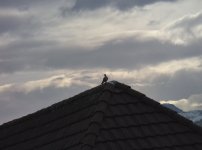 AXV_20240210-Collared Dove.jpeg901.3 KB · Views: 187
AXV_20240210-Collared Dove.jpeg901.3 KB · Views: 187 -
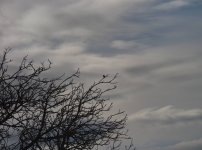 No ID.jpeg970.5 KB · Views: 158
No ID.jpeg970.5 KB · Views: 158 -
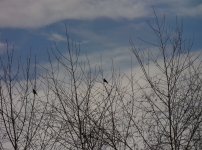 Great Tit - Wrong ID.jpeg966.3 KB · Views: 157
Great Tit - Wrong ID.jpeg966.3 KB · Views: 157 -
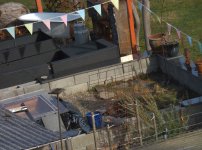 Blue Tit - No ID.jpeg965.6 KB · Views: 158
Blue Tit - No ID.jpeg965.6 KB · Views: 158 -
 Blackbird - Non ID.jpeg960.2 KB · Views: 163
Blackbird - Non ID.jpeg960.2 KB · Views: 163 -
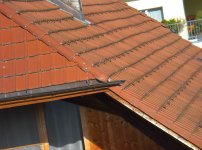 AXV_20240214-Sparrow.jpeg965.6 KB · Views: 159
AXV_20240214-Sparrow.jpeg965.6 KB · Views: 159 -
 AXV_20240214-Blue Tit2.jpeg961.7 KB · Views: 155
AXV_20240214-Blue Tit2.jpeg961.7 KB · Views: 155 -
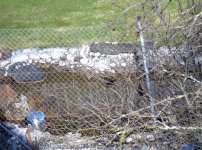 AXV_20240214-Blackbird.jpeg955.9 KB · Views: 153
AXV_20240214-Blackbird.jpeg955.9 KB · Views: 153 -
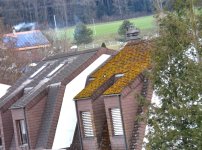 AXV_20240212-Magpie.jpeg946.1 KB · Views: 160
AXV_20240212-Magpie.jpeg946.1 KB · Views: 160 -
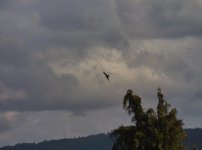 AXV_20240211-Red Kite2.jpeg961.4 KB · Views: 149
AXV_20240211-Red Kite2.jpeg961.4 KB · Views: 149 -
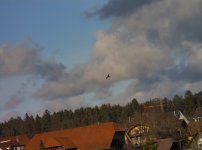 AXV_20240211-Red Kite.jpeg973.4 KB · Views: 143
AXV_20240211-Red Kite.jpeg973.4 KB · Views: 143 -
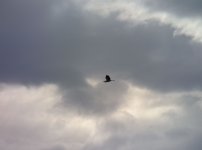 AXV_20240210-Grey Heron.jpeg960.5 KB · Views: 148
AXV_20240210-Grey Heron.jpeg960.5 KB · Views: 148 -
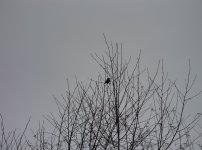 AXV_20240210-Great Tit.jpeg974.5 KB · Views: 164
AXV_20240210-Great Tit.jpeg974.5 KB · Views: 164
Last edited:








